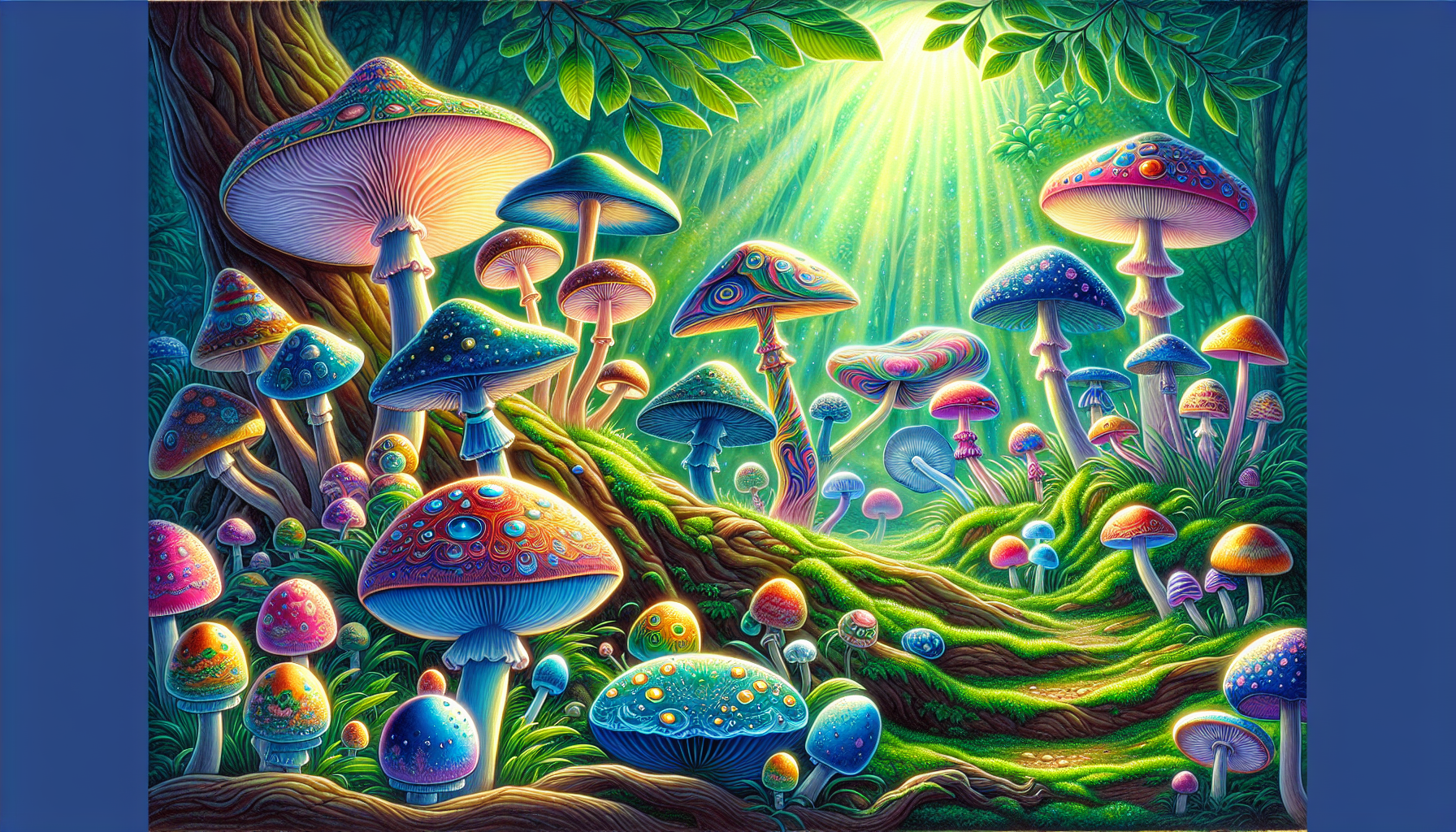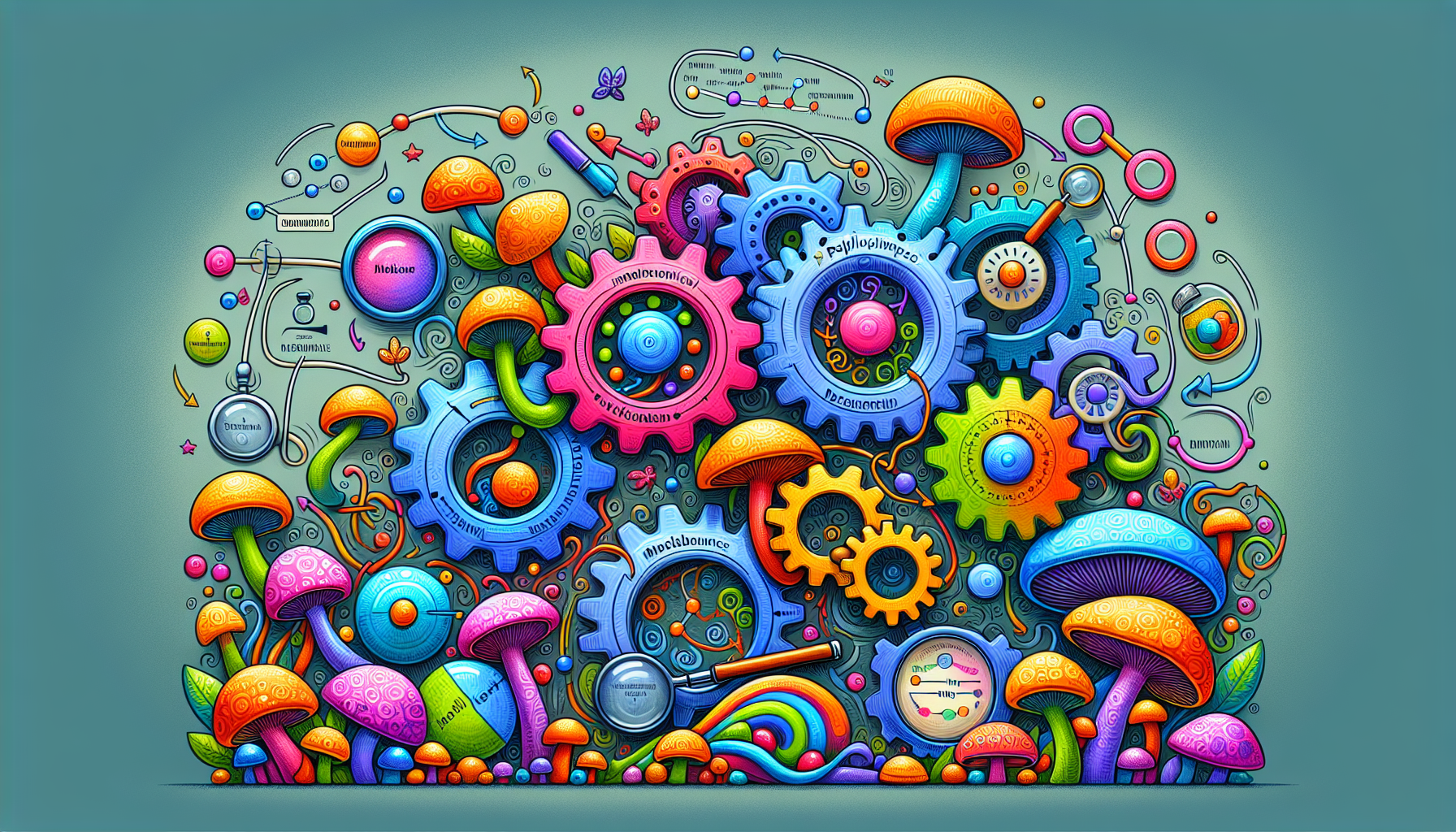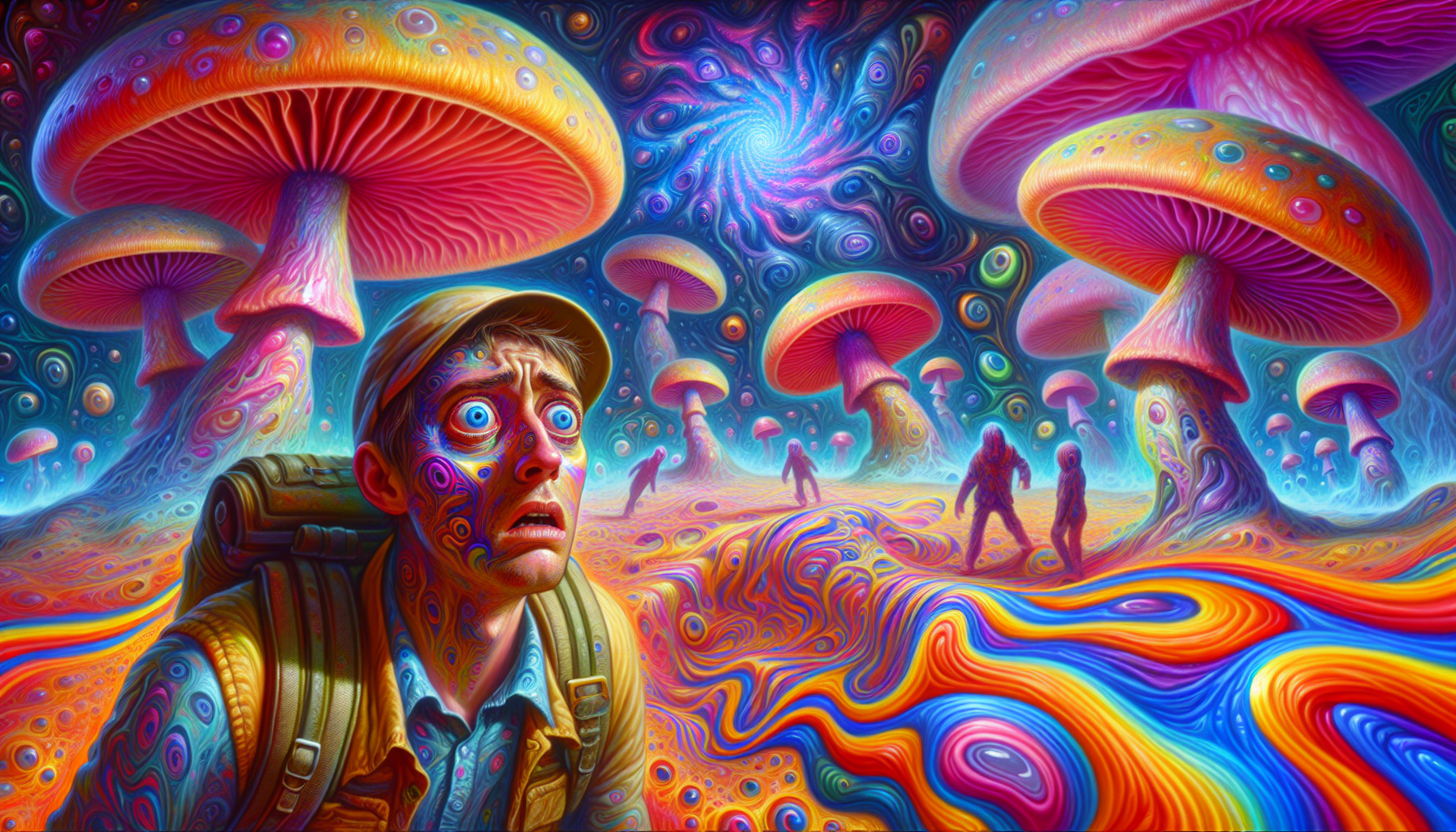Will Shrooms Show Up on Drug Test? What You Need to Know
Will shrooms show up on drug test? Standard tests usually don’t screen for psilocybin, but specialized tests can. This article covers how different drug tests detect magic mushrooms and whether will shrooms show up on drug test results.
Key Takeaways
-
Magic mushrooms contain psychoactive compounds psilocybin and psilocin, which induce altered states of consciousness and sensory perception lasting up to six hours.
-
Drug tests, especially standard urine tests, typically do not detect psilocybin; specialized testing is required, with psilocybin usually eliminated from the body within 24 hours.
-
The risks associated with magic mushroom consumption include severe psychological effects, potential legal issues, and the possibility of substance dependence, necessitating professional help for addiction.
Understanding Magic Mushrooms

Magic mushrooms and psychedelic mushrooms are intriguing types of fungi. They have psychoactive compounds known as psilocybin and psilocin. Upon ingestion, psilocybin is converted into psilocin, which then interacts with serotonin receptors in the brain, leading to altered sensory perception and mood. This interaction can result in profound changes in consciousness, thoughts, and emotions, often described as a “trip”.
The effects of magic mushrooms typically begin within 30 minutes if consumed directly and within 5-10 minutes when brewed into a tea, lasting up to six hours. During this time, users may experience a range of hallucinogenic effects, from mild visual distortions to intense, reality-bending hallucinations. These effects can also include feelings of euphoria, a heightened sense of well-being, and an altered perception of time and space.
Magic mushrooms come in various species, each with different levels of psilocybin and psilocin. Whether fresh shrooms or dried shrooms are consumed, the intensity and duration of the psychedelic effects can vary. Understanding these hallucinogenic mushrooms is crucial for comprehending their impact on drug tests and the potential lingering effects they may have on sensory perception and overall mental health.
Drug Test Types and Detection Windows
Drug tests are designed to detect specific substances in the body, including psilocybin mushrooms. The detection window for hallucinogenic mushrooms is relatively short, often making it challenging to detect psilocybin after 24 hours. The type of drug test and the time elapsed since ingestion significantly influence the likelihood of detecting shrooms.
Various drug tests, such as urine, blood, saliva, and hair follicle tests, can detect psilocybin. However, standard drug tests typically do not include psilocybin, requiring specialized tests to identify its presence. Each test type has its own detection window, ranging from a few hours to several months, depending on the method used and individual factors.
Urine Tests
Urine tests are the most commonly used method for detecting psilocybin due to their noninvasive nature and ease of administration. Federally regulated programs often use urinalysis as the primary method for drug testing. Psilocybin is typically detectable in urine for about 24 hours after consumption, although in some individuals, it can be detected for up to a week.
Standard 5-panel urine tests do not screen for psilocybin mushrooms, making it necessary to use specialized urine tests to detect magic mushroom use. Approximately 65% of psilocybin is excreted in urine, which underscores the importance of using the right type of test, including the standard drug test, to identify its presence. Despite their limitations, urine drug tests remain a widely accepted method due to their accessibility and noninvasive procedure.
The need for specialized urine testing highlights the unique challenges in detecting psilocybin. While standard drug tests overlook psilocybin, tailored tests can accurately detect shrooms, ensuring a comprehensive assessment of recent magic mushroom use.
Blood Tests
Blood tests are another method employed to detect psilocybin in the body, though they are considered more invasive than urine or saliva tests. Blood tests can identify psilocybin only a few hours after consumption, making them effective for short-term detection.
Due to their invasive nature, blood tests are usually performed only if there is a strong suspicion of recent psilocybin use. The likelihood of false positives is low, which can make blood tests a reliable option in certain contexts. However, their invasiveness often limits their use to specific situations where a precise and immediate assessment is necessary.
Saliva Tests
Saliva tests offer a noninvasive method for detecting psilocybin, with the ability to identify its presence within 30 minutes of ingestion. The detection window for psilocybin mushrooms using saliva tests is up to 24 hours, making it a viable option for short-term detection.
The advantages of saliva tests include ease of administration, quick results, and a low potential for false positives. These qualities make saliva tests an attractive choice for situations requiring rapid and reliable detection of recent magic mushroom use without the need for more invasive procedures.
Hair Follicle Tests
Hair follicle tests are known for their long detection window, potentially identifying psilocybin use for up to three months. Despite this extended window, hair follicle tests are seldom used for detecting psilocybin due to their specificity and the complexity of hair testing.
Although hair follicle tests can detect psilocybin, their practical application is limited. The long detection window can be useful for understanding historical drug use, but the rarity of their use for psilocybin makes them less relevant compared to other testing methods.
Factors Influencing Psilocybin Detection

Several factors can influence how long psilocybin stays in the system, affecting its detectability. Psilocybin is metabolized rapidly. Most of it is eliminated within 24 hours of being consumed. The liver plays a crucial role in this process, breaking down psilocybin into inactive compounds that are then excreted.
The dosage consumed significantly impacts the detection window; higher doses result in longer detection times. Individual factors such as metabolism, body mass index (BMI), and hydration levels also play a role in how quickly psilocybin is eliminated from the body. Health conditions, medications, and age can further extend the detection window, with older individuals potentially experiencing slower clearance due to reduced metabolic rates.
Understanding these factors is essential for accurately predicting how long psilocybin may be detectable. Each person’s body processes psilocybin differently, leading to large variations in clearance times between individuals.
Can You Speed Up Psilocybin Elimination?

While some natural strategies can assist in detoxing from psilocybin, their effectiveness can vary. Proper hydration, nutrition, and regular physical activity may aid in the elimination process, but they do not significantly hasten the removal of psilocybin from the body. Drinking plenty of water and engaging in regular exercise can help maintain overall health, but they are unlikely to drastically speed up psilocybin clearance.
It is important to note that avoiding alcohol and other drugs can help the body focus on eliminating psilocybin more effectively. However, the notion of significantly accelerating the removal of magic mushrooms from the body remains largely unsupported by scientific evidence.
Risks of Shroom Consumption

Magic mushroom use carries several risks and potential negative consequences. Common adverse effects include intense hallucinations, distorted thinking, and feelings of panic or paranoia. Bad trips can lead to severe fear, paranoia, and a sense of loss of control, which can be distressing and potentially dangerous.
Consuming psilocybin mushrooms outside of controlled medical environments increases the risk of adverse effects, including accidental poisoning from misidentification with poisonous mushroom species. Users may experience nausea, stomach pain, and headaches, adding to the physical discomfort of a bad trip.
Recent studies have reported a significant rise in law enforcement seizures of psilocybin mushrooms in the U.S., highlighting the legal risks associated with their use. While not considered the most dangerous drug, the recreational use of magic mushrooms can lead to unforeseen negative consequences and should be approached with caution.
Seeking Help for Substance Abuse
If you or someone you know is struggling with substance abuse, seeking professional help is crucial. Regular use of magic mushrooms may result in psychological dependence. It can also cause issues such as anxiety, depression, and even psychosis. Increased tolerance and an inability to stop use are signs of addiction. Additionally, continued consumption despite negative consequences is another indicator.
Withdrawal symptoms from shroom use can involve irritability, mood swings, and cravings, making it difficult to quit without support. Long-term abuse can result in severe psychological effects such as psychosis and hallucinogen-persisting perception disorder (HPPD). Comprehensive addiction treatment programs, including therapy, counseling, and support groups, provide the necessary tools to overcome the effects of shroom abuse.
Professional help is available at various addiction treatment centers, such as The Bluffs Addiction Campuses, which offer specialized programs for magic mushroom addiction. Addiction is a treatable condition, and seeking help is the first step towards long-term recovery and improved mental health services administration.
Summary
In summary, understanding the detection and risks of psilocybin mushrooms is essential for anyone considering or currently using these hallucinogenic fungi. The short detection window and need for specialized drug tests make it challenging to detect psilocybin, but various factors like metabolism and dosage can influence its presence in the body. The potential risks of magic mushroom use, including bad trips and legal consequences, highlight the importance of informed and responsible behavior.
If you or someone you know is struggling with substance abuse, seeking professional help is crucial. Addiction treatment programs offer the support needed for recovery, and understanding the risks and detection methods can guide safer and more responsible use. Stay informed, stay safe, and prioritize your mental health and well-being.
Seeking Treatment? We Can Help!
We work with PPO Out of Network Health Insurance Policies
If you or a loved one are struggling with mental health challenges or substance abuse, reach out to Mountain Sky Recovery today. Our team of compassionate professionals is here to support your journey towards lasting well-being. Give us a call at 951-877-5868.
FAQs For Will Shrooms Show Up on Drug Test?
How long do magic mushrooms stay detectable in the body?
Magic mushrooms can generally be detected in the body for about 24 hours, but in some instances, traces may remain in urine for up to a week. This variability depends on factors such as dosage and individual metabolism.
Can standard drug tests detect psilocybin mushrooms?
Standard drug tests typically do not detect magic mushrooms, as they primarily identify substances like THC, cocaine, and opiates. Specialized testing is necessary to identify psilocybin.
What are the risks of consuming magic mushrooms?
Consuming magic mushrooms poses significant risks, such as intense hallucinations, bad trips, potential poisoning, and worsening existing mental health conditions. It is essential to approach their use with caution.
Can I speed up the elimination of psilocybin from my body?
You cannot significantly speed up the elimination of psilocybin from your body; however, staying hydrated and exercising may be beneficial for your overall well-being.



